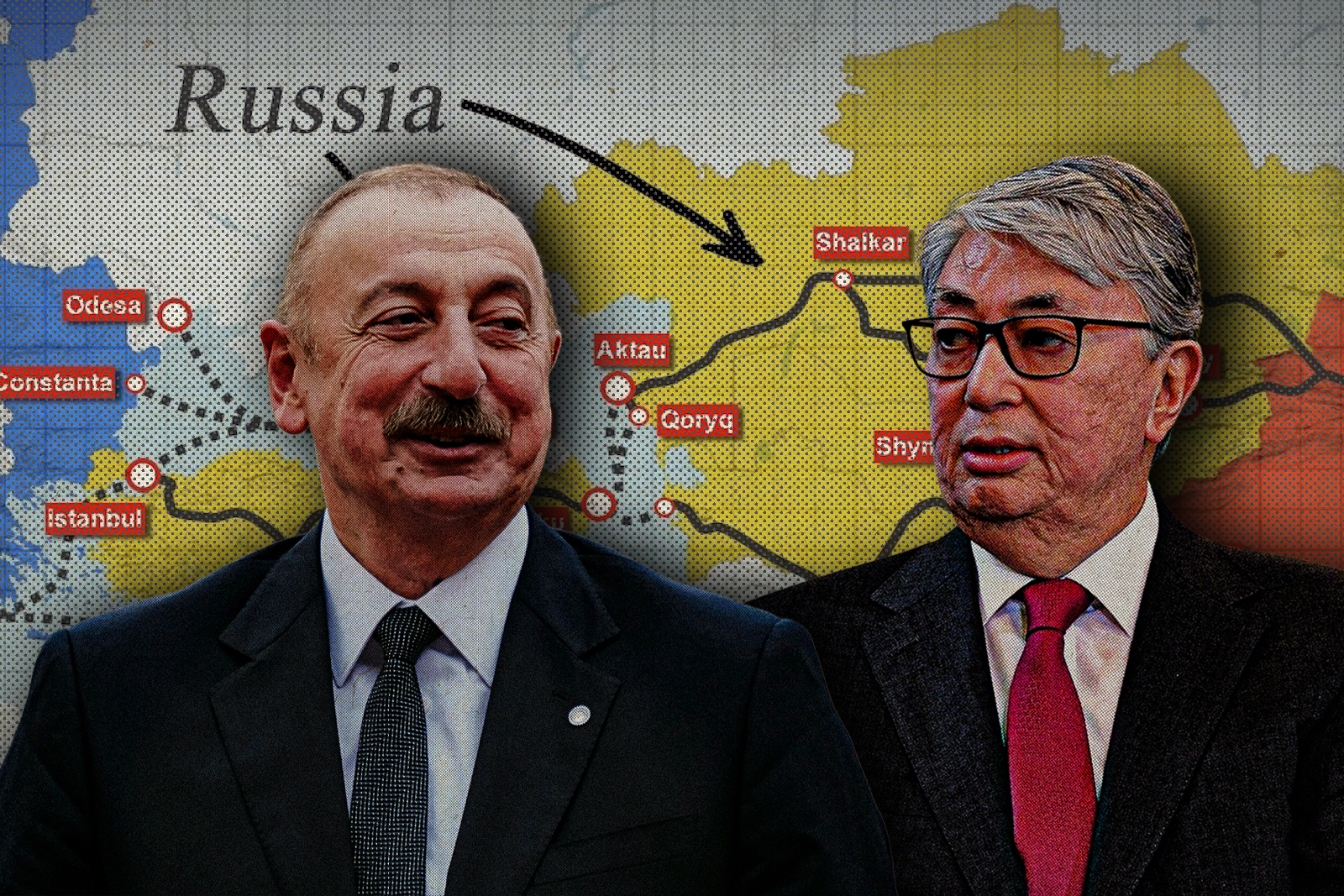
How Some Caspian States are Capitalizing on Trade
In April, a meeting between Ilham Aliyev and Kassym-Jomart Tokayev, the presidents of Azerbaijan and Kazakhstan, went generally unnoticed by international media. Unfortunately, given the number of ongoing issues across the globe this would be expected. While the meeting was generally described as cordial and “by the book” in the sense that no groundbreaking agreements were signed, strong bilateral relations between Astana and Baku are necessary to guarantee the success of the Middle Corridor. Unsurprisingly, this vital transport route was discussed and featured prominently in the discussions.
Felix K. Chang, writing in Foreign Policy Research Institute, describes the Middle Corridor as a vital transport route that connects East Asia to Europe. “The ‘Middle Corridor’—a loosely defined trade route that spans the Central Asian steppe, the Caspian Sea, and the Caucasus mountains—has both engendered excitement and disappointment for almost two decades…The corridor’s major components include the Trans-Caspian East-West-Middle Corridor Initiative, the Trans-Caspian International Transport Route, and the Trans-Caucasus Trade and Transit Corridor. For its advocates, the Middle Corridor will breathe new life into the ancient Silk Road.”
According to a readout provided by Kazakhstan’s government, Tokayev said the two governments are looking to improve the Corridor in areas including “logistics services, the creation of unified transport operators, the modernization of technical and tariff conditions, the elimination of administrative barriers and the formation of a closed logistics cycle.”
According to a joint statement released following the high-level meeting: “The Parties also confirm that further interaction between the countries of the region in the effective solution of issues in the transport and transit sphere is in the common interest and is among the priorities of national transport strategies. The most important direction of this is the [Middle Corridor].”
Furthermore, the two governments remain committed to removing “bottlenecks” and the development of the Middle Corridor in line with an agreement that was signed late last year.
Astana and Baku have signed agreements to strengthen their bilateral relationship in recent years. During the April meeting, Tokayev remarked, “Last year, we signed a Declaration on Strengthening Strategic Relations and Deepening Allied Cooperation, as well as a Comprehensive Program for the Development of Cooperation until 2026.” Six memorandums of understanding were signed during the visit. Bilateral trade has reached half a billion dollars, with the aim to reach one billion.
The Astana Times, a quasi-state-run newspaper, analyzed the presidential meeting, highlighting the cooperation between the two governments on the Middle Corridor. “The Baku Declaration and roadmaps for the simultaneous elimination of bottlenecks and the development of the Middle Corridor for 2022-2027,” signed by the four member states of the Corridor “in November 2022, envision measures for the development of [the Middle Corridor].”
Finally, the two presidents “discussed export of Kazakhstan’s crude oil through the territory of Azerbaijan,” among other joint investment projects. Kazakhstan is partnering with Azerbaijan to transport oil, therefore reducing its dependence on the Caspian Pipeline Consortium, which passes through Russia. “This year, the first batch of Kazakh oil was shipped through Azerbaijan. The next step is to increase the volume of deliveries and make them [stable],” Tokayev remarked.
The Middle Corridor is an initiative to promote commerce and the transportation of goods, connecting Central and East Asia to Europe and international markets. The Middle Corridor was created in 2014, and its relevance has grown since Russia invaded Ukraine, and the Kremlin was hit with debilitating economic sanctions. I have previously discussed how the Azerbaijan-Kazakhstan partnership is the axis of the Middle Corridor. Hence, the April meeting is important as solid relations between Astana and Baku are necessary for the Middle Corridor to succeed.
It is essential to note that not only are four countries members of the Middle Corridor but there are also many beneficiaries. From Central Asia, Uzbek, and Chinese companies are benefitting immensely and the Middle Corridor has already delivered goods to several European countries.
In addition, Kazatomprom, Kazakhstan’s nuclear agency, has utilized the agreement to deliver uranium to Canada and Romania. In other words, several entities benefit from having the Middle Corridor as an efficient transportation route. Azerbaijan and Kazakhstan “are motivated by the growing demand for further development of this passageway, which emerged in recent months as European companies have pivoted away from the Russian-dominated transit routes,” the Jamestown Foundation’s Vasif Huseynov pointed out.
During a conference in Istanbul in November 2022, ADY Container, a regional shipping company, said during the first “10 months of this year,” cargo transportation across the Middle Corridor “increased by 45 percent compared to the corresponding period of the previous year.”
Additionally, according to Vasif Huseynov, the Middle Corridor brings Astana and Baku even closer. “The Middle Corridor, connecting the two shores of the Caspian Sea, has a special role in the Kazakhstani-Azerbaijani bilateral relationship.” During the meeting in April with his Azerbaijani counterpart, Tokayev pointed out that the two governments “‘synchronized watches’ on regional and international issues.”
The Middle Corridor is not free of challenges, and it is also dependent on events outside the control of the four member states. One obvious concern is the war in Ukraine, which may affect the future of the agreement, mainly shipping via the Black Sea. Similarly, tensions between Azerbaijan and Armenia could prove problematic in the future.
Additionally, investment in infrastructure and transportation routes is still required throughout the Middle Corridor’s other key nodes. Moreover, a limited amount of oil can be transported through the Caspian Sea aboard tanker ships. Therefore, Kazakhstan and Azerbaijan will need international partners to help increase their fleet of ships to travel the Caspian more often. This will be a costly investment.
The good news is that relations between Azerbaijan and Kazakhstan remain strong. “The fact that we meet so often during official visits speaks both of the nature of our relations and of the fact that there is a need to be in contact,” said Aliyev. Tokayev is similarly positive: “Azerbaijan is a fraternal state for Kazakhstan, a very close state.” Good diplomatic relations, major investment, cautious analysis of other geopolitical developments, strategic foresight, and even luck, are all needed for the Middle Corridor to become a success.

